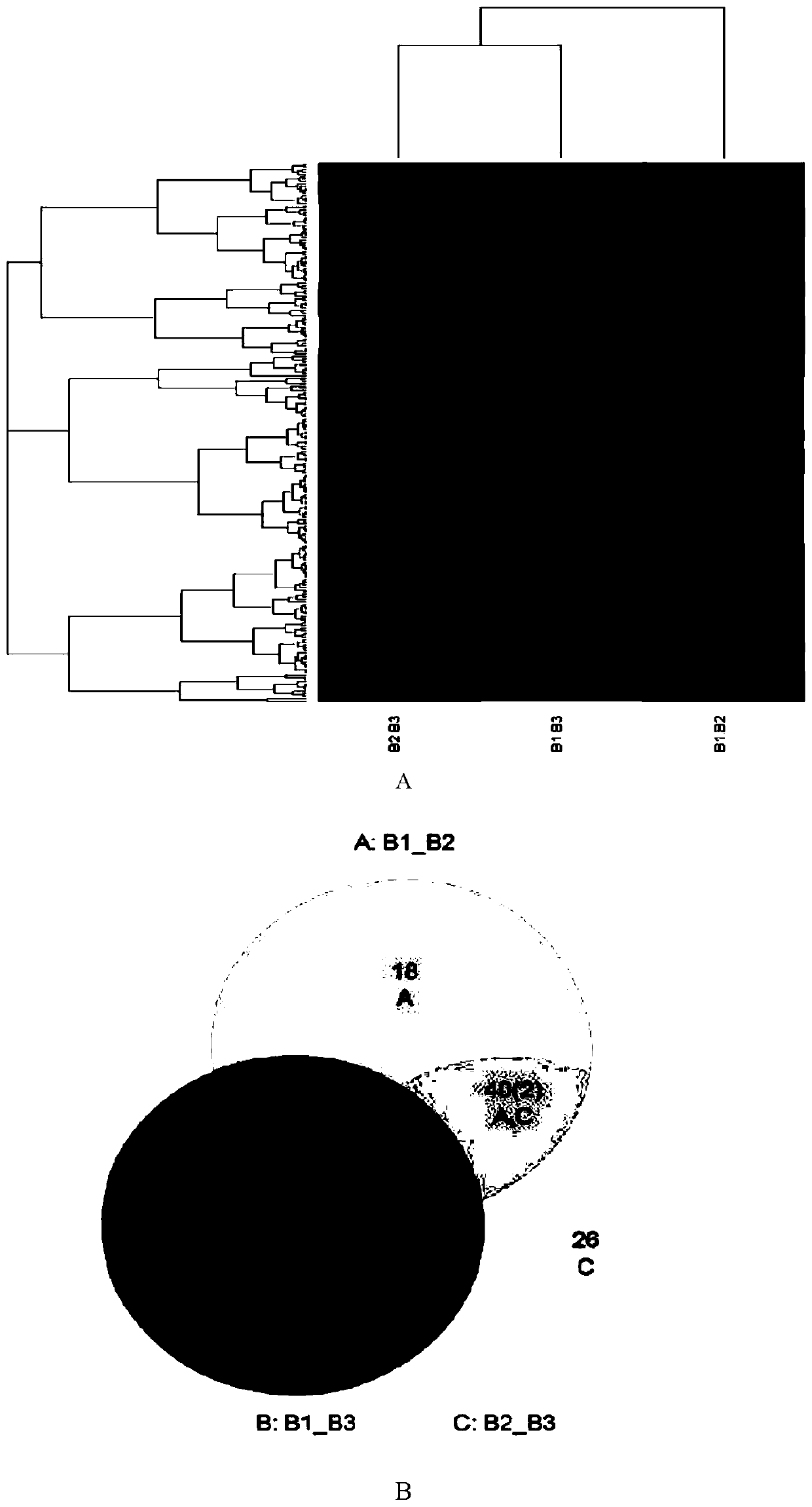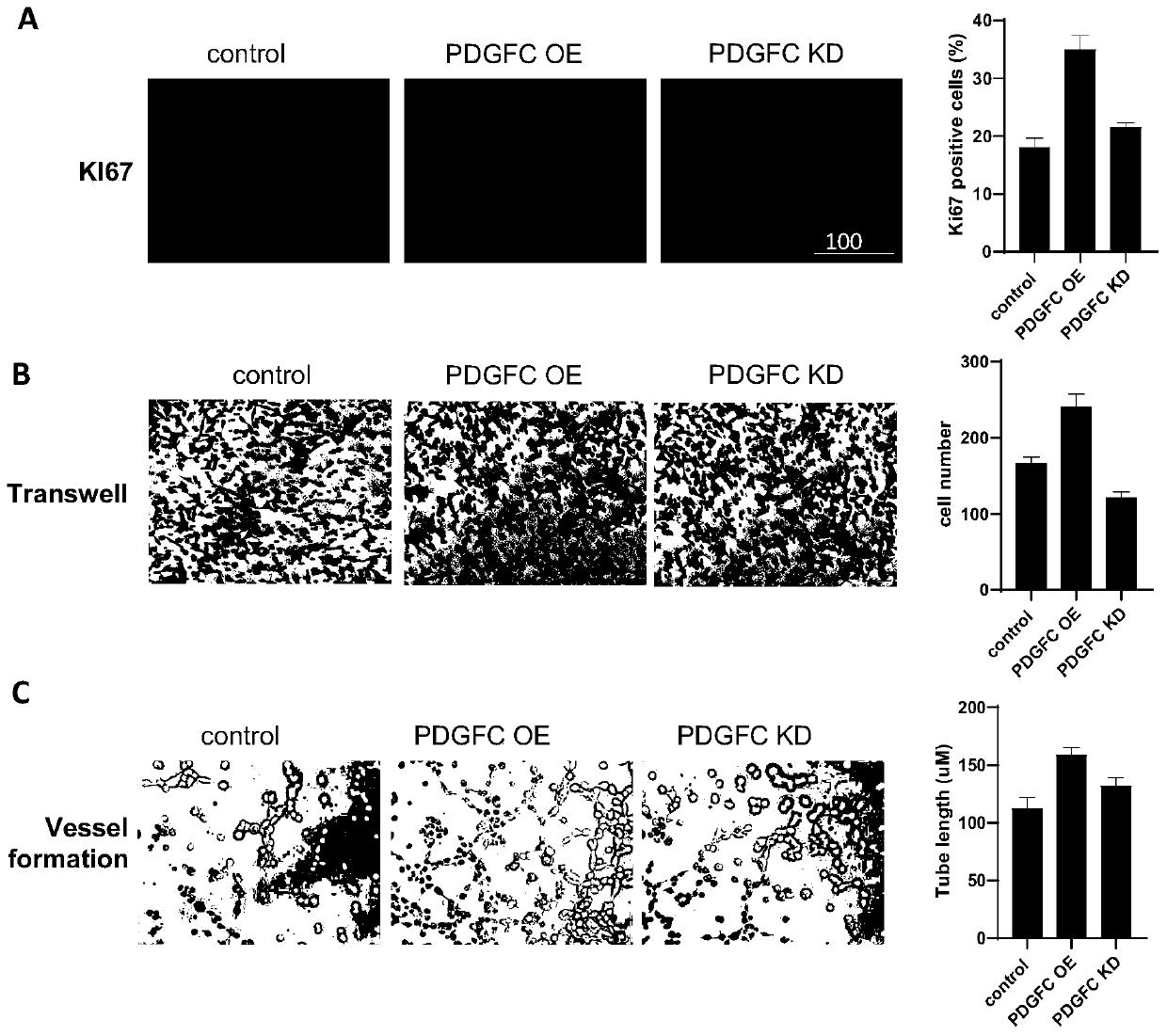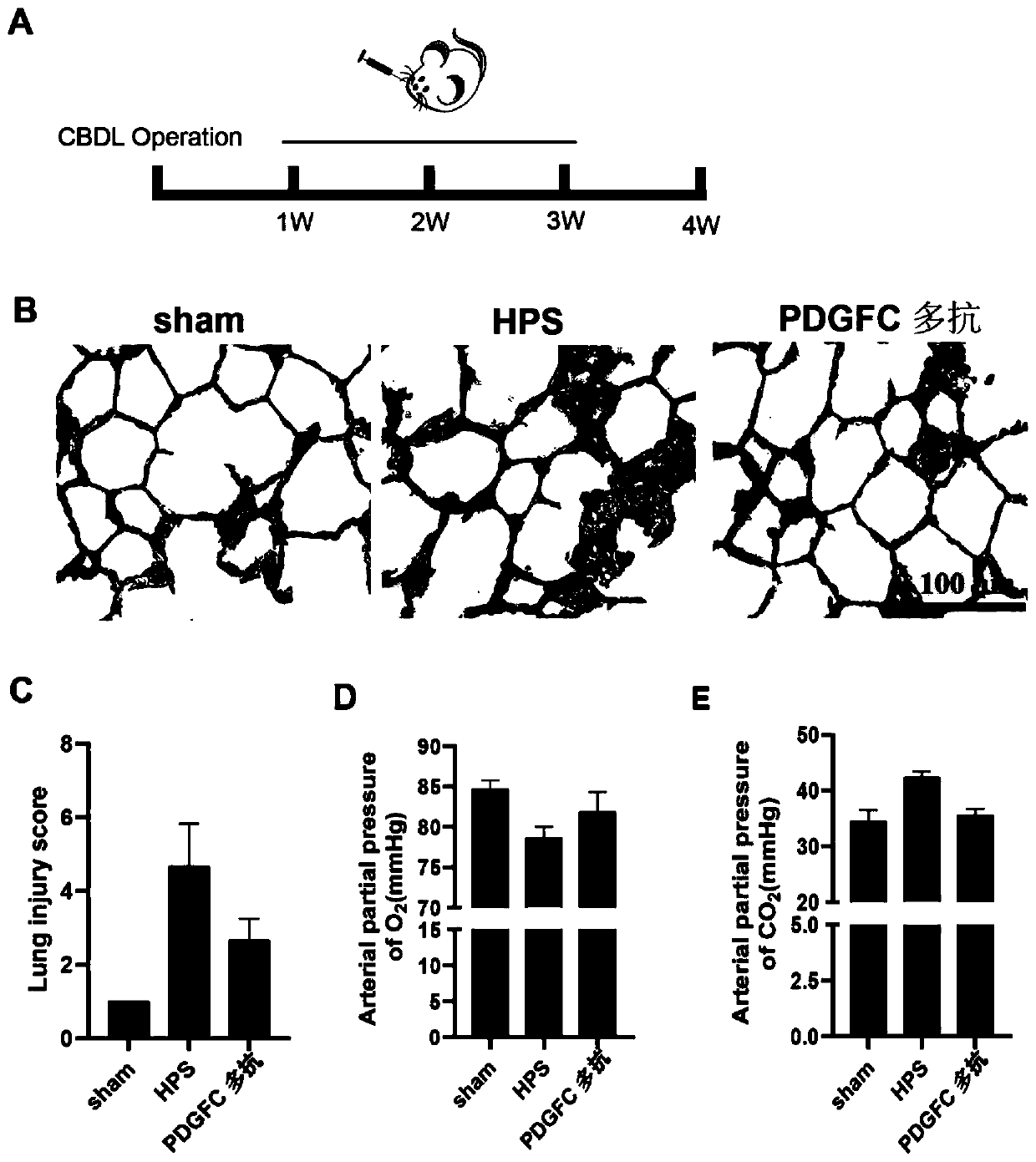Application of pro-angiogenic factor PDGFC as marker for diagnosis and treatment of hepatopulmonary syndrome
A technology for promoting angiogenesis and pulmonary syndrome, applied in the field of biomedicine, can solve problems such as poor therapeutic effect, no definite effect, limited oxygen exchange and diffusion function, and achieve the effect of promoting proliferation
- Summary
- Abstract
- Description
- Claims
- Application Information
AI Technical Summary
Problems solved by technology
Method used
Image
Examples
Embodiment 1
[0019] Example 1, screening of pro-angiogenic factors
[0020] The proteomics method was used to screen the molecules with high abundance in the blood of HPS model rats that may be related to angiogenesis, and the specific methods were as follows:
[0021] (1) Constructing a rat model of hepatopulmonary syndrome by ligation of the common bile duct
[0022] The HPS rat model was established by common bile duct ligation (CBDL), 30 rats in the sham group and 30 in the operation group. SD male adult rats, weighing 200-220 g, were used to establish an animal model of HPS by common bile duct ligation (common bile duct ligation, CBDL). Rats in the control group were only subjected to laparotomy without ligation of the common bile duct. Blood gas analysis was used to judge the expansion of pulmonary microvessels: after weighing the rats, they were anesthetized with 5% chloral hydrate at 7 mL / g; the abdominal cavity was quickly opened to expose the abdominal aorta, and blood was draw...
Embodiment 2
[0027] Example 2, verifying the angiogenesis-promoting function of PDGFC
[0028] Using the constructed PDGFC knockdown and overexpression lentivirus (Follenzi A, Ailles LE, Bakovic S, Geuna M, Naldini L: Gene transfer by lentiviral vectors is limited by nuclear translocation and rescued by HIV-1pol sequences. Nature genetics 2000, 25(2):217-222.) deal with pulmonary microvascular endothelial cells, and measure the pro-angiogenic function of microvascular endothelial cells through the proliferation, migration and tube-forming ability of microvascular endothelial cells.
[0029] The results of cell proliferation experiments ( figure 2 , A) showed that the number of Ki67-positive cells in the PDGFC overexpression group was significantly higher than that in the control group, and the number of Ki67-positive cells in the PDGFC knockdown group was significantly lower than that in the control group, which indicated that PDGFC overexpression can promote the angiogenesis ability of p...
Embodiment 3
[0032] Embodiment 3, preparation polyclonal antibody, evaluates the influence on the state of an illness of HPS rat
[0033] First, a polyclonal antibody to PDGFC was prepared. The method of preparing polyclonal antibodies was invented by British scientists Milstein and Kohler in 1975, and won the Nobel Prize in Medicine in 1984 for this. But as far as we know, there is no polyclonal antibody or antibody drug / preparation against PDGFC on the market. Therefore, based on the previous research, we constructed PDGFC polyclonal antibody for the treatment of HPS rats, and it is expected to be used in HPS patients to achieve disease intervention.
[0034] The prepared PDGFC polyclonal antibody was injected into HPS rats by tail vein injection, the single injection dose was 120ml / day / kg, and the administration method of 1ml / kg / day was tail vein administration, such as image 3 Middle A. After three weeks of administration, it was dissected, and the analysis results were as follows:...
PUM
 Login to View More
Login to View More Abstract
Description
Claims
Application Information
 Login to View More
Login to View More - R&D
- Intellectual Property
- Life Sciences
- Materials
- Tech Scout
- Unparalleled Data Quality
- Higher Quality Content
- 60% Fewer Hallucinations
Browse by: Latest US Patents, China's latest patents, Technical Efficacy Thesaurus, Application Domain, Technology Topic, Popular Technical Reports.
© 2025 PatSnap. All rights reserved.Legal|Privacy policy|Modern Slavery Act Transparency Statement|Sitemap|About US| Contact US: help@patsnap.com



